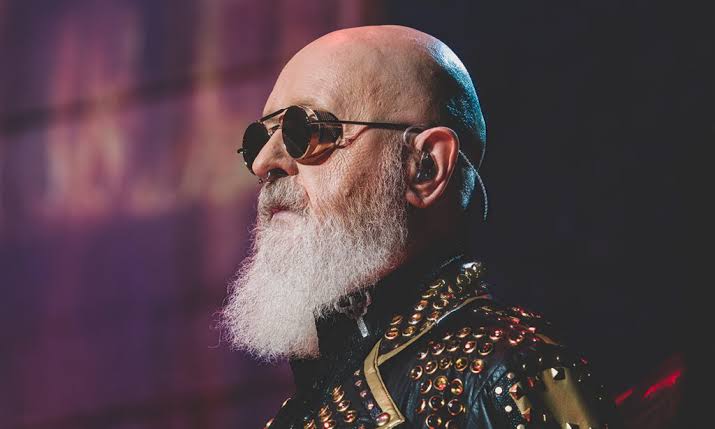Rob Halford: The Metal God Who Shaped a Genre, Broke Barriers, and Became Immortal With a voice that could pierce the heavens and a stage presence that redefined power, Halford didn’t just sing heavy metal….
In the pantheon of heavy metal legends, few shine as brightly or resonate as deeply as Rob Halford—the iconic frontman of Judas Priest. With a voice that could pierce the heavens and a stage presence that redefined power, Halford didn’t just sing heavy metal; he was heavy metal. From defining the sound of a genre to becoming a beacon of authenticity and strength, Halford’s journey is one of transformation, rebellion, and ultimate triumph. And now, his legacy is being immortalized—in bronze and in history.
The Voice That Forged Steel
Born in Birmingham, England, the industrial heartland that birthed heavy metal itself, Rob Halford joined Judas Priest in 1973 and quickly helped sculpt the sound that would become synonymous with the genre. With albums like Sad Wings of Destiny, British Steel, and Painkiller, Halford brought operatic range and primal aggression to metal vocals—blending leather-clad fury with spine-chilling high notes that became his signature.
Under his leadership, Judas Priest helped define the aesthetic of metal: dual lead guitars, thundering rhythms, and a theatricality that would influence bands from Metallica to Slipknot. Halford’s contributions weren’t just vocal—they were visionary. His stagewear, inspired by biker culture, set a visual blueprint for generations of metalheads.
Live Aid: Priest’s Global Roar
In 1985, Judas Priest took to the global stage at Live Aid, joining a once-in-a-lifetime lineup that included Queen, U2, and David Bowie. Performing at the JFK Stadium in Philadelphia, Halford and his band delivered a blistering set that introduced their ferocity to an audience of over 1.5 billion viewers worldwide. It was a moment that validated heavy metal’s global reach—and cemented Halford’s status as one of music’s great frontmen.
“That day, we weren’t just performing,” Halford later recalled. “We were representing a movement. A sound. A family.”
Breaking Chains: Coming Out in Metal
In 1998, Halford made history once again—this time not with a scream, but with his truth. During an MTV interview, he came out as gay, making him one of the first openly gay musicians in the metal community. The reaction from fans and fellow musicians was overwhelmingly positive, a reflection of the respect Halford had earned over decades.
“I’ve always said that metal is about freedom—freedom to be who you are, to feel what you feel, to scream when others tell you to be silent,” Halford said in his autobiography, Confess. “Coming out was one of the most metal things I’ve ever done.”
His courage inspired countless others and helped chip away at stereotypes that once plagued the rock and metal worlds. He became not just the “Metal God” but also a symbol of resilience, self-acceptance, and progress.
Immortalised in Bronze and Beyond
Now, in 2025, Rob Halford is being honoured in the most fitting way imaginable—a larger-than-life statue is being unveiled in Birmingham’s Centenary Square. Sculpted by renowned artist Douglas Jennings, the monument captures Halford mid-roar, mic in hand, leather and studs gleaming. Fans from across the globe have flocked to witness the unveiling, some clad in vintage tour shirts, others in full-on leather homage.
“It’s not just a statue of Rob,” said Judas Priest guitarist Glenn Tipton at the ceremony. “It’s a monument to everything metal stands for—strength, freedom, passion.”
The tribute coincides with Judas Priest’s 50th anniversary, further underscoring the monumental legacy of the band and its frontman. A special concert is also set to take place in Birmingham this weekend, with Halford headlining an all-star celebration featuring metal titans from across the decades.
A Living Legend
At 73, Halford remains as fierce and commanding as ever. Whether tearing through classics like “Hell Bent for Leather” or delivering searing new anthems from the band’s latest album Invincible Armageddon, his presence remains magnetic. He is both a bridge to the genre’s roots and a guiding light for its future.
When asked what the statue means to him, Halford smiled and said: “It’s humbling. I never set out to be a symbol. I just wanted to make loud music with my mates and scream my heart out. If that gave people strength or joy, then that’s the real legacy.”
From the steely skies of Birmingham to the stages of the world, Rob Halford’s voice has echoed for generations. Now, cast in bronze and carved into history, the Metal God stands eternal—a symbol of sound, truth, and the unstoppable power of heavy metal.
